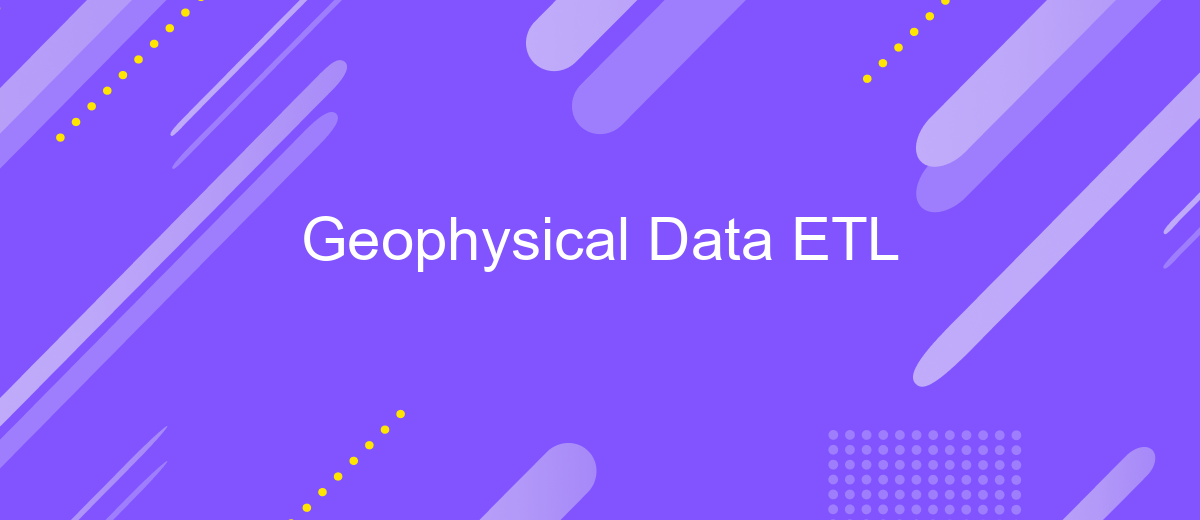Geophysical Data ETL
Geophysical Data ETL (Extract, Transform, Load) is a critical process in the field of geosciences, enabling the efficient handling and analysis of vast amounts of data. This process ensures that raw geophysical data is accurately extracted, properly transformed into a usable format, and effectively loaded into databases for further analysis, facilitating better decision-making and research outcomes.
Introduction
Geophysical data extraction, transformation, and loading (ETL) processes are critical for the effective analysis and utilization of vast amounts of geophysical information. These processes enable researchers and professionals to convert raw data into a structured format that can be easily analyzed and interpreted. By streamlining data workflows, ETL processes enhance the accuracy and efficiency of geophysical studies.
- Data Extraction: Collecting raw geophysical data from various sources such as sensors, satellites, and field measurements.
- Data Transformation: Converting the raw data into a usable format through cleaning, normalization, and integration.
- Data Loading: Storing the transformed data into databases or data warehouses for further analysis and visualization.
To optimize the ETL processes, tools like ApiX-Drive can be utilized to automate data integration and synchronization between different systems. ApiX-Drive provides a user-friendly interface for setting up integrations without the need for extensive coding, making it an invaluable resource for geophysical data management. By leveraging such tools, organizations can ensure seamless data flow and focus on deriving actionable insights from their geophysical data.
Data Sources and Extraction

Geophysical data extraction begins with identifying reliable sources such as remote sensing satellites, seismic surveys, and ground-based monitoring stations. These sources provide a wealth of raw data, including topographic maps, seismic wave records, and climate data. The quality and accuracy of these data sources are crucial, as they form the foundation for subsequent data processing and analysis. Ensuring the data is up-to-date and comprehensive is essential for generating meaningful insights.
To streamline the extraction process, integration tools like ApiX-Drive can be invaluable. ApiX-Drive facilitates the seamless connection between various data sources and your ETL pipeline, automating the data extraction and minimizing manual intervention. This service supports a wide range of geophysical data formats and ensures that data is consistently and accurately pulled into your system. By leveraging such tools, organizations can enhance efficiency, reduce errors, and focus more on data analysis rather than data collection.
Data Transformation

Data transformation in geophysical ETL processes involves converting raw geophysical data into a structured format suitable for analysis. This step is crucial as it ensures data consistency, quality, and usability, enabling more accurate interpretations and insights.
- Data Cleaning: Remove duplicates, fill in missing values, and correct errors.
- Data Normalization: Standardize data formats, units, and scales.
- Data Aggregation: Summarize data to a higher level of granularity.
- Data Enrichment: Integrate additional data sources to enhance dataset value.
- Data Validation: Ensure data accuracy and integrity through validation rules.
Services like ApiX-Drive can simplify the integration of various data sources, automating the transformation process. By using ApiX-Drive, you can set up data pipelines that automatically clean, normalize, and enrich your geophysical data, saving time and reducing the potential for human error. This automation streamlines the ETL process, allowing geophysicists to focus more on data analysis and less on data preparation.
Data Loading

Data loading is a critical phase in the ETL (Extract, Transform, Load) process, where transformed geophysical data is transferred into the target database or data warehouse. This phase ensures that the data is ready for analysis and reporting, maintaining its integrity and consistency.
Efficient data loading involves several steps, including the selection of appropriate loading techniques, managing data dependencies, and ensuring minimal downtime. It's vital to handle large volumes of geophysical data with care to avoid performance bottlenecks and data loss.
- Incremental Loading: Loading only the new or changed data to reduce load time.
- Batch Loading: Loading data in batches to manage large datasets efficiently.
- Real-time Loading: Continuously loading data to ensure up-to-date information.
Using integration services like ApiX-Drive can simplify the data loading process by automating the transfer of geophysical data from various sources to the target system. ApiX-Drive provides a user-friendly interface and robust features to streamline data workflows, ensuring that data is loaded accurately and efficiently.
Data Management and Quality Control
Effective data management and quality control are crucial for successful geophysical data ETL processes. This involves the systematic organization, storage, and retrieval of large datasets to ensure accuracy and consistency. Implementing robust data validation techniques, such as consistency checks and anomaly detection, helps in identifying and rectifying errors early in the data pipeline. Leveraging automated tools and software solutions can further streamline these processes, reducing manual intervention and the potential for human error.
Integration of various data sources is another critical aspect, and services like ApiX-Drive can significantly simplify this task. ApiX-Drive offers seamless integration capabilities, allowing for efficient data flow between disparate systems. By automating data transfers and transformations, ApiX-Drive ensures that data remains synchronized and up-to-date across all platforms. Additionally, its user-friendly interface and customizable workflows make it easier to manage complex data integration tasks, ultimately enhancing the overall quality and reliability of geophysical datasets.
FAQ
What is Geophysical Data ETL?
Why is ETL important in geophysical data analysis?
What are the common challenges in Geophysical Data ETL?
How can automation help in Geophysical Data ETL?
What should be considered when choosing an ETL tool for geophysical data?
Routine tasks take a lot of time from employees? Do they burn out, do not have enough working day for the main duties and important things? Do you understand that the only way out of this situation in modern realities is automation? Try Apix-Drive for free and make sure that the online connector in 5 minutes of setting up integration will remove a significant part of the routine from your life and free up time for you and your employees.

